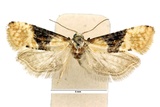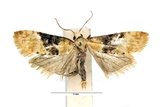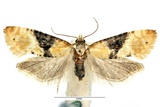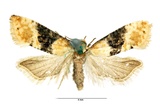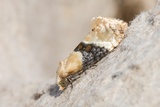Eupoecilia ambiguella (Hübner, 1796) Species
Last modified: Dec. 4, 2024, 1:16 p.m.
In 2006 recorded for the first time in the south of Belgium. Hitherto a rare species with more observations in the northeastern part of the country.
Details
- Classification
- Family: Tortricidae > Subfamily: Tortricinae > Tribus: Cochylini > Genus: Eupoecilia > Species: Eupoecilia ambiguella
- Vernacular names
- Blauw smalsnuitje (NL), Vine Moth (EN), Einbindiger Traubenwickler (DE)
- Synonyms
- Eupoecilia roserana (Frölich, 1828)
- First mention in Belgium
- De Sélys-Longchamps E. 1844. Énumération des insectes Lépidoptères de la Belgique. — Mémoires de la Société royale des Sciences de Liége 2: 1–35. On page 22.
- Status
-
Native
Distribution
Egg
Slightly elliptical in shape, 0.8 mm in length and pale yellow. Eggs singly on buds, pedicels, and flowers during the first generation, and on grape berries during the second generation.
Caterpillar
Up to 10–12 mm. Body colour ranges from brown to yellow and green. Head, prothoracic plate and legs are dark brown to black. Pinacula are large, conspicuous and dark brown. The anal shield is pale brown.
Bionomics
The larva feeds in the berries on the host plant, spinning two or three together. When full-fed it constructs a leaf-case amongst detritus on the ground or attached to a stem, overwintering therein. Pupation in that leaf-case as a second generation pupa.
The moths are active in the evening and later come to light.
Flight periods
The adults have been observed from late April till mid-September.
Observed on
- Host plant (genera):
- Frangula
The polyphagous larva feeds on berry bearing plants like Frangula alnus, Hedera, Lonicera, Cornus mas, Ligustrum, Rhamnus cathartica, Vitis vinifera, Symphoricarpus, Acer campestre, Sorbus aucuparia etc...
Habitat
It inhabits parks, gardens, open woodland, scrub.
